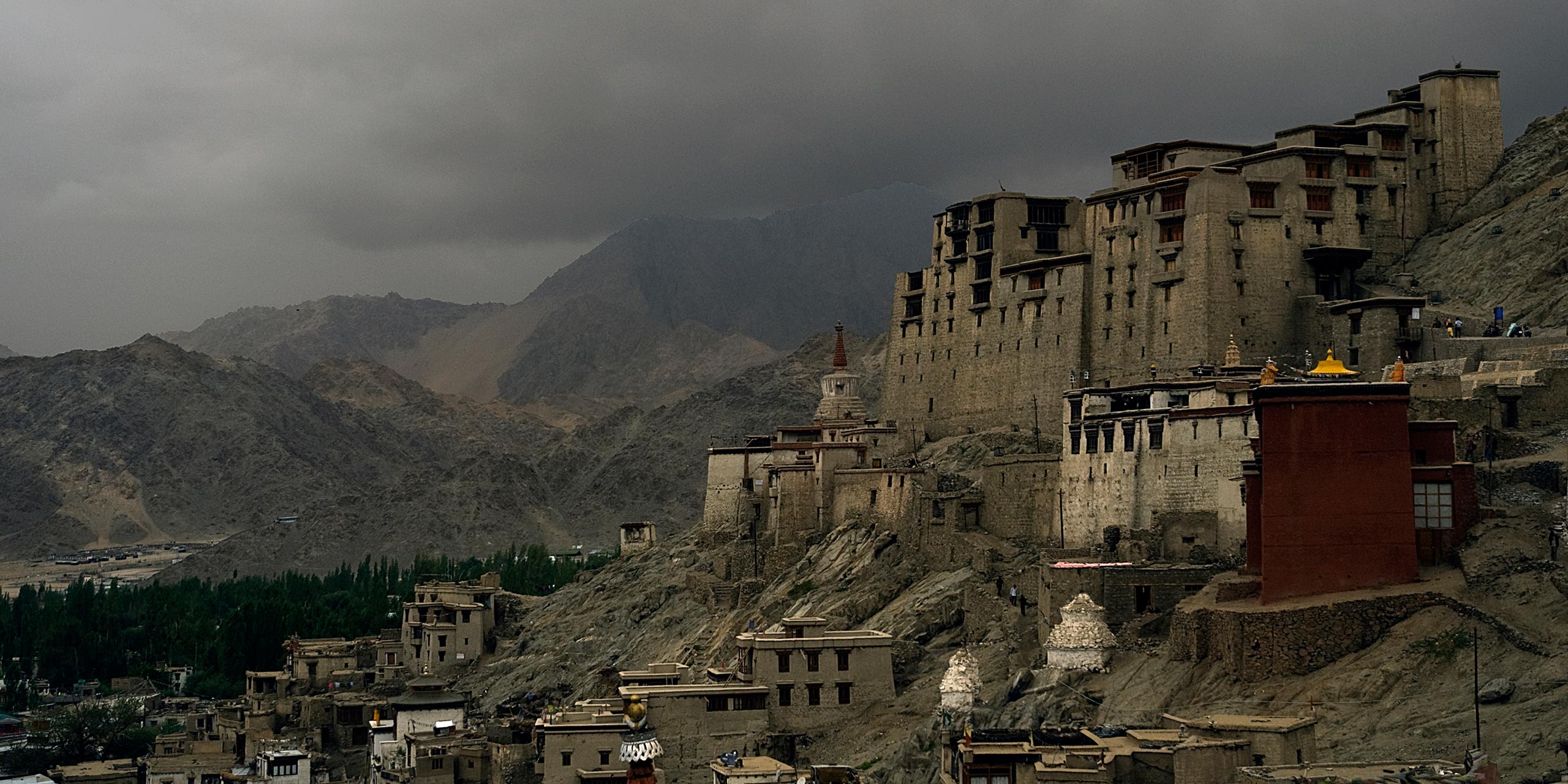
The slanting rays of the early morning sun illuminated the wide valley that lay before us. As our Sumo Grande negotiated the asphalt track, the rolling sand-colored hills loomed on both sides. The 7-km stretch between Leh Bakula Rimpoche airport showed hardly any signs of the barrenness that is associated with Ladakh. Years of social forestation efforts have reaped dividends in the swathes of greenery and clusters of verdant poplars lining the wide highway.
Leh of the Land
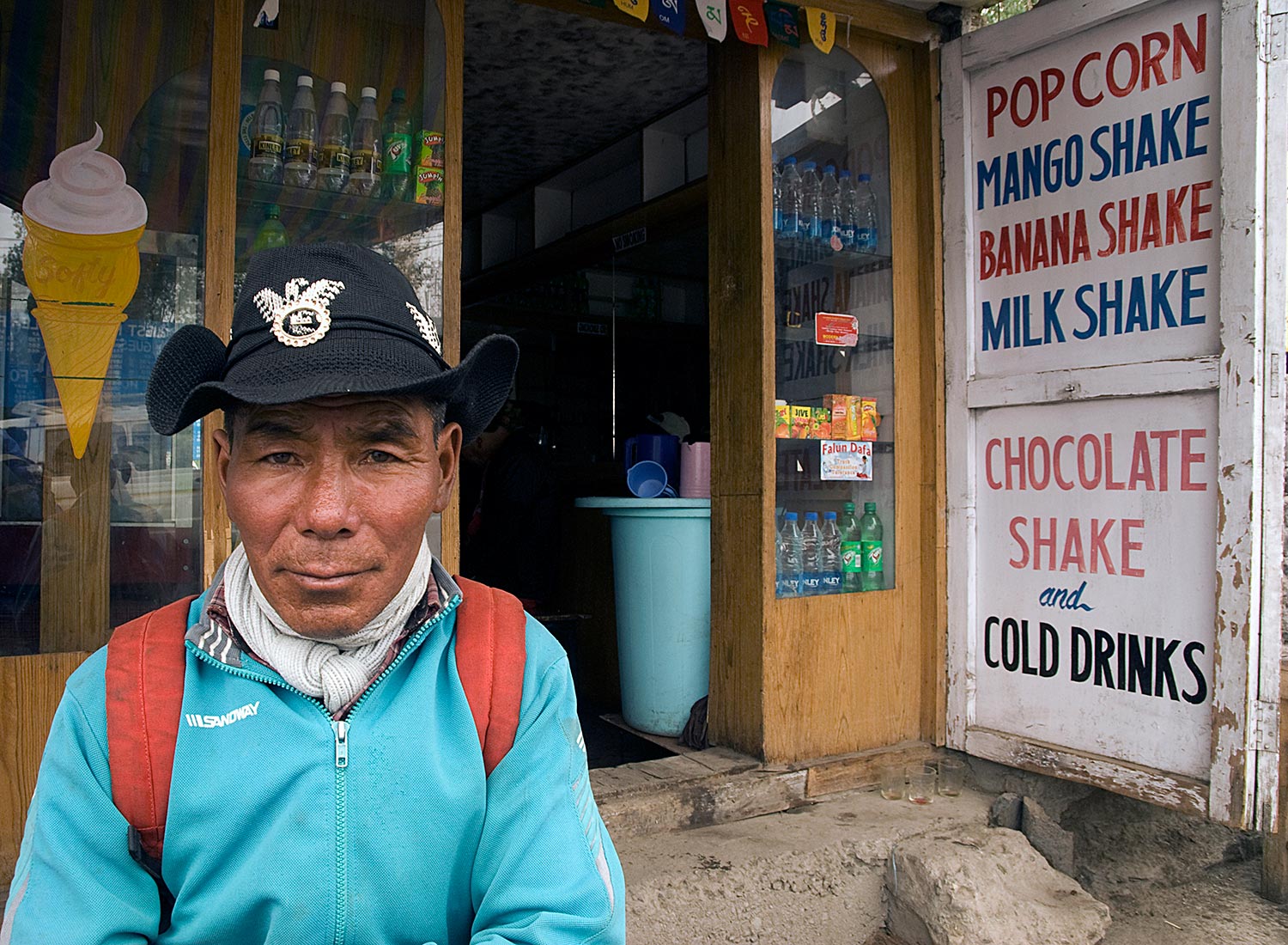
Leh is a multi-layered city. On one hand, it accommodates more pizza parlors, bakeries, and rooftop restaurants than one can imagine in a Trans-Himalayan town. On the flip side, wizened old monks silently pass you with a prayer wheel in hand and traditionally attired women sell their merchandise along the main thoroughfare.
The brooding snowcapped mountains form the backdrop to the Leh Palace, a structure that bears a striking resemblance to the Potala Palace of Lhasa. It is a short climb through a back alley from the main bazaar and the view from the top took our breath away. A few hundred meters above on the same hill, after a giddying hike, is Namgyal Tsemo Gompa (Gompa means monastery), the medieval royal Buddhist shrine.
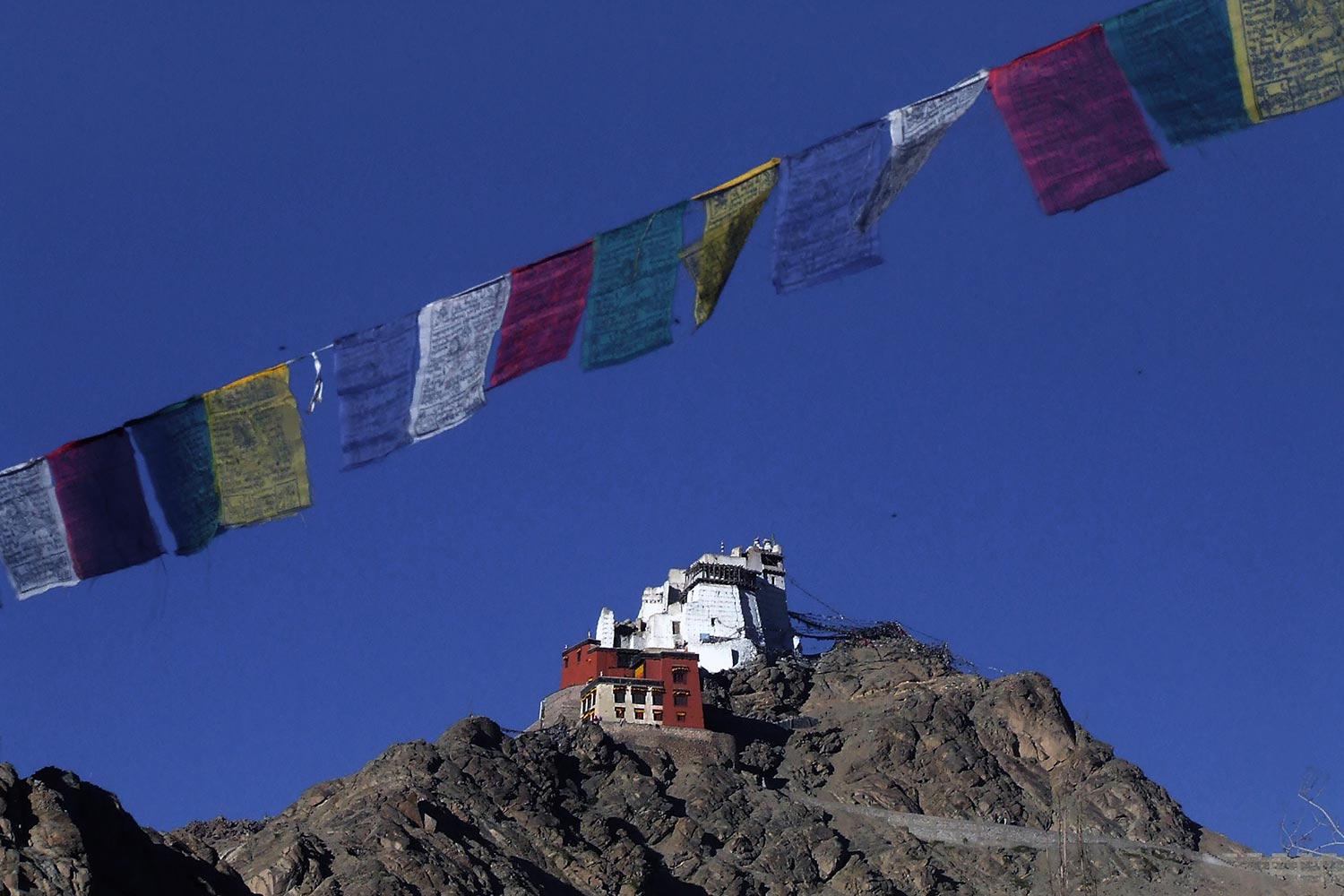
The best way to get a feel of Leh is to take a leisurely walk around the central plaza. It is a pretty easy place to get comfortable with since everything is within walking distance. The hotels are mostly centrally located in the old town. The sidewalks get lively from early morning as women in ornate headgear and traditional Ladakhi attire sell an entire gamut of merchandise including dried apricots, succulent almonds, walnuts, fresh and dried vegetables, and ethnic jewelry. And the narrow lanes that veer off in the inner recesses of the old town can be even more exotic with tiny shops selling brocaded hats, felt shoes, sheepskin cloaks and antique knick-knacks.
And the culinary canvas of India‘s highest city is as diverse as it gets. From the best of pizzas and lasagna to authentic Tibetan food and exquisite Kashmiri curries, Leh has it all. A piping hot coffee or a chilled beer can be a perfect accompaniment to discuss the nuances of Tibetan Buddhism in any of the rooftop restaurants in downtown Leh with a glorious sunset on the Stok Kangri massif (6153 m) forming an ethereal backdrop.
Holy Trails
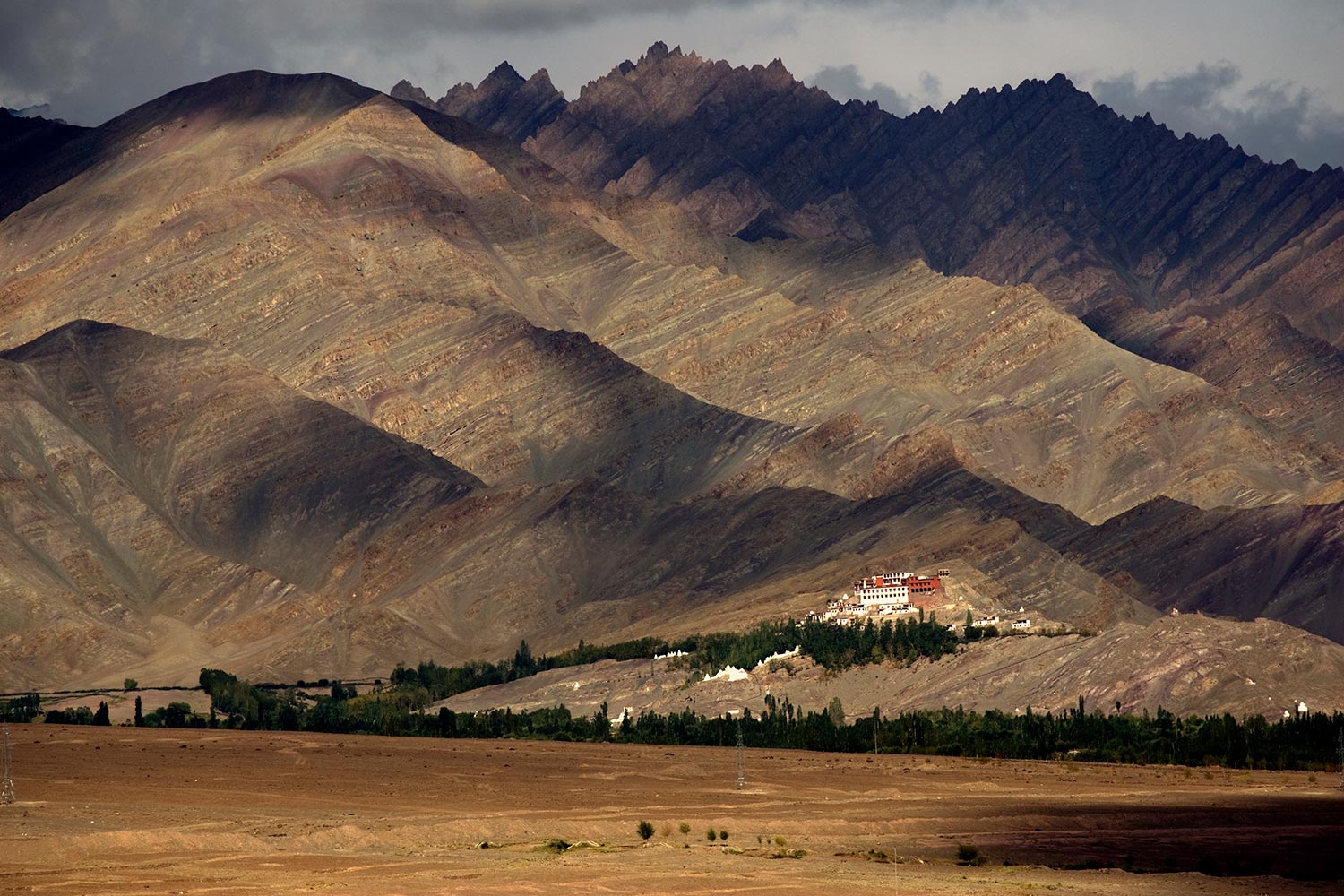
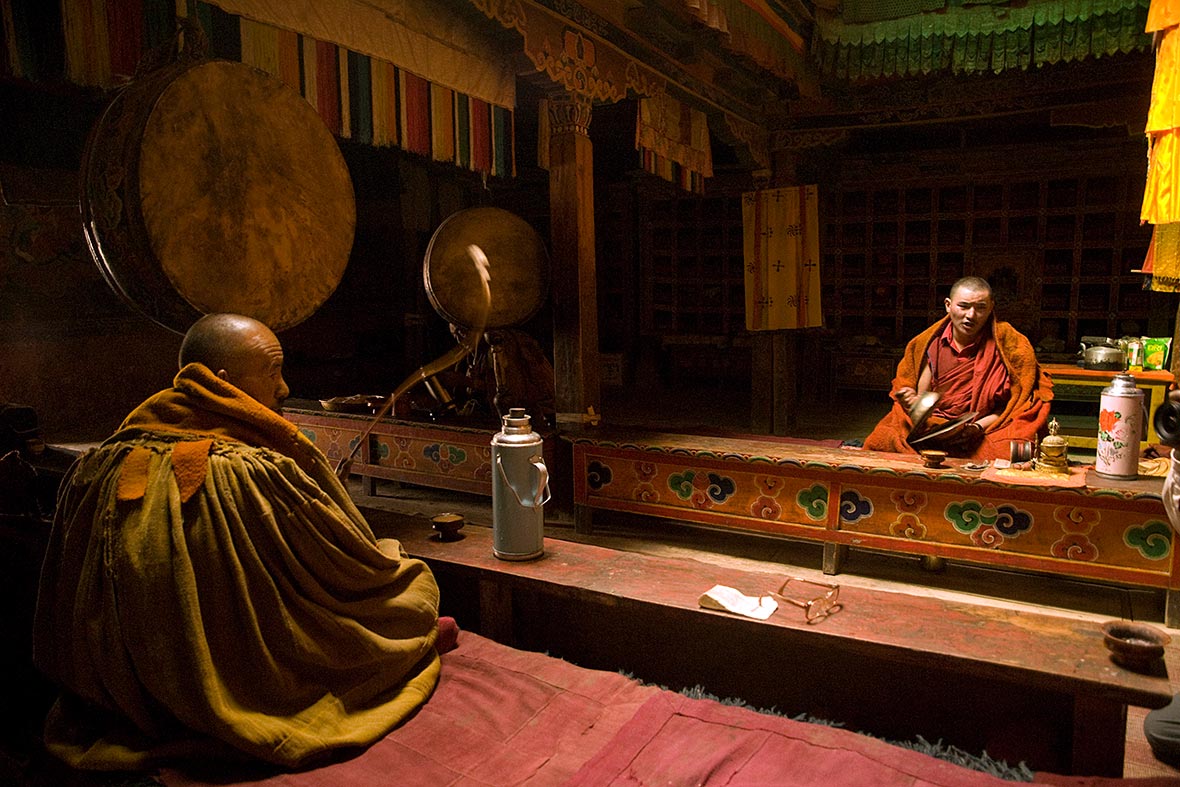
It takes a couple of days to have a proper feel of the highest city in India before visiting the centuries-old monasteries around Leh: Stakna, Thiksey, Matho and Hemis.
Perched precariously atop steep inclines of barren hilltops, the honeycomb structures of these ancient monasteries loomed overhead as silent bystanders as we negotiated the impeccably maintained highway that connects different parts of India’s northwest frontier.
The interiors of the monasteries felt like time warps with their dark halls, ancient thangkas, statues of Buddhist deities and the all-pervading smell of melted yak butter and incense. In some of them, we were offered butter tea and while you might have to acquire the taste of it, that does work well to brave the cold. Hemis, the grandest of all these monasteries with its gilded statues and majestic chambers and the veritable treasure of its museum is a testimony of the region’s religious and cultural heritage.
The wild west
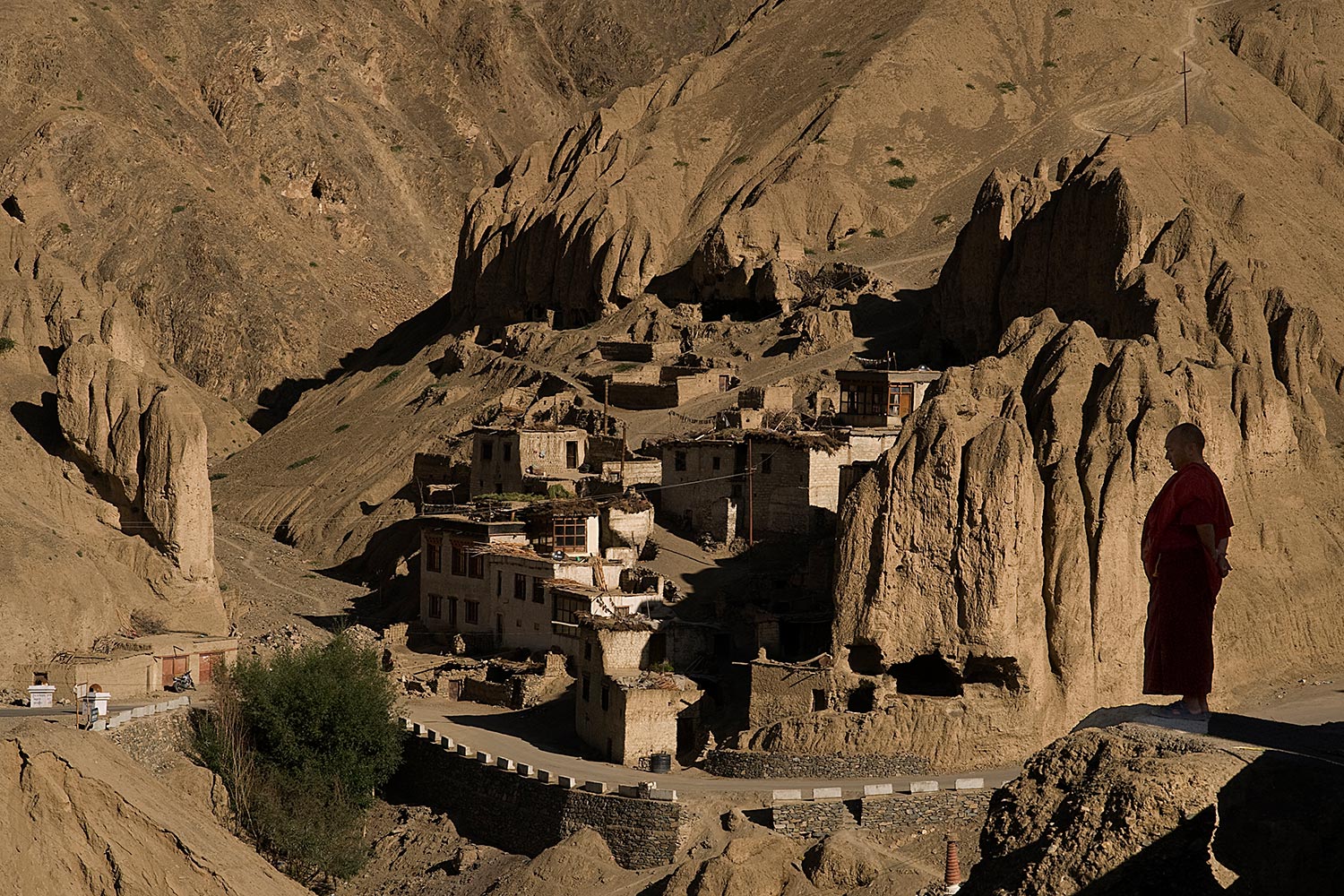
Lamayuru is an ancient settlement in western Ladakh around 120 kilometres from Leh. As we approached the town, we came to realize why Lamayuru is better known as Moonland.
The landscape was astounding with schist and fold mountains twisted out of proportion by millions of years of wind erosion to assume fantastical shapes. Nestled amidst the bizarre moonscape stood the ancient monastery of Lamayuru, dating back a thousand years.
Legend has it that the area was under a great lake and a Buddhist saint, Naropa, meditated here for many years.
He had convinced the guardian spirits to drain away the lake and founded a settlement. Interestingly, geologists have confirmed the presence of a lake in Lamayuru and the folds and schists are those remnant silts, which have been eroded by the wind.
Take it to the lakes
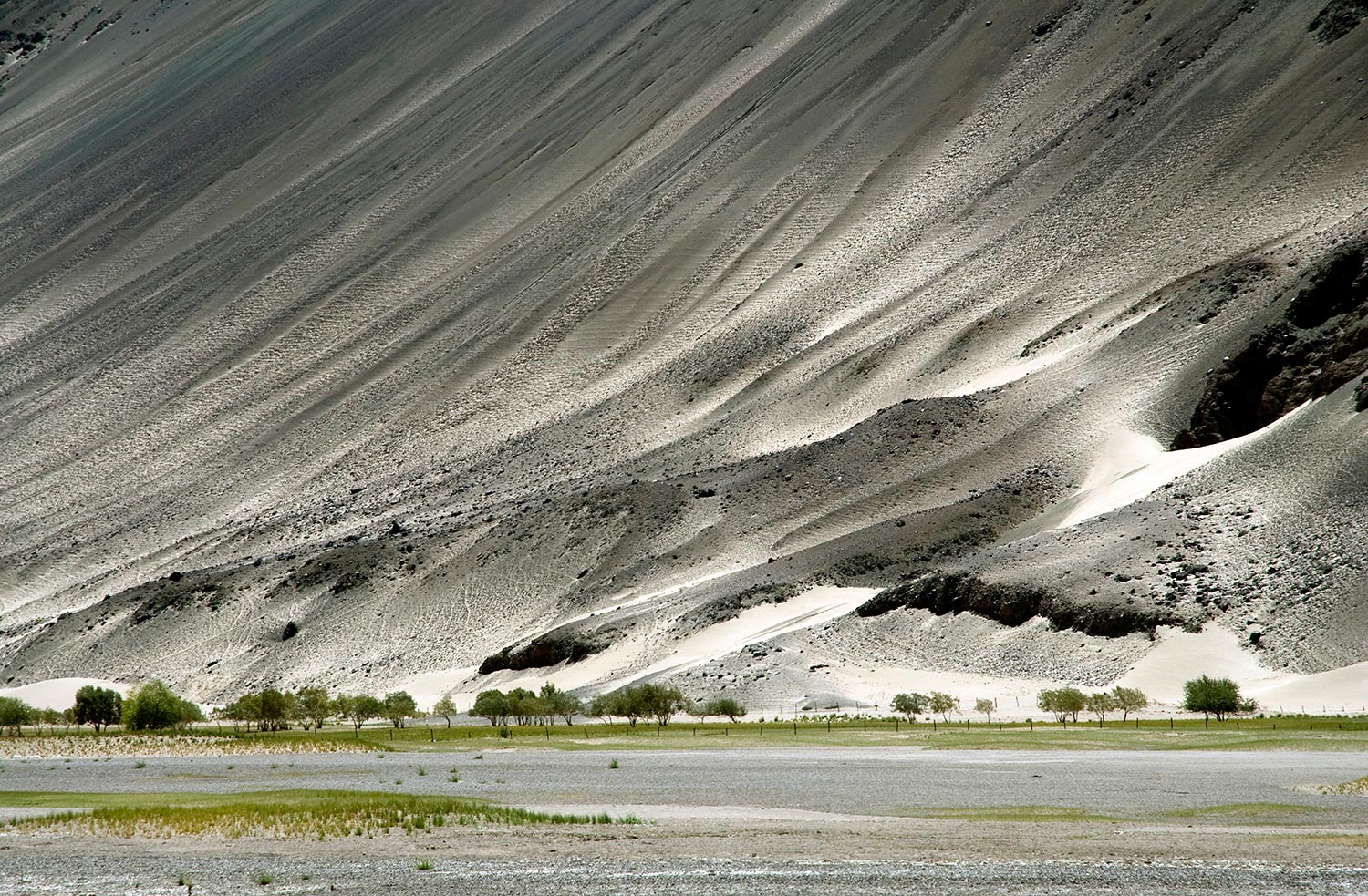
The short Ladakh summer was ending, and we set off on a chilly morning to Tso Moriri, southeast of Leh. At first, we followed the Indus, the gravelly bed suggesting its mightier past. Gradually, we went uphill into mountain country; and the ochre mountainsides turned to a deep shade of burgundy.
The milky green waters of Tasang Tso lay before us, the pristine stillness ruffled by the occasional breeze. This is the land of the Changpas, the nomadic tribe primarily engaged in cattle rearing and practically living off their herd. We stopped at a Changpa tent for a round of piping hot butter tea, the slight trace of Pashmina hair floating on the thick, pinkish liquid, turning it into a more authentic experience.
After descending a shallow valley, we finally hit Tso Moriri, a 20km stretch of brackish waters encircled by rolling sandy hills and two of Ladakh’s highest peaks, the Changser Kangri and Lamser Kangri.
Korzok village, on the lakeshore, has about a hundred houses and a small monastery. It’s worthwhile to take a stroll through its stoned alleys to have a feel of the local life.
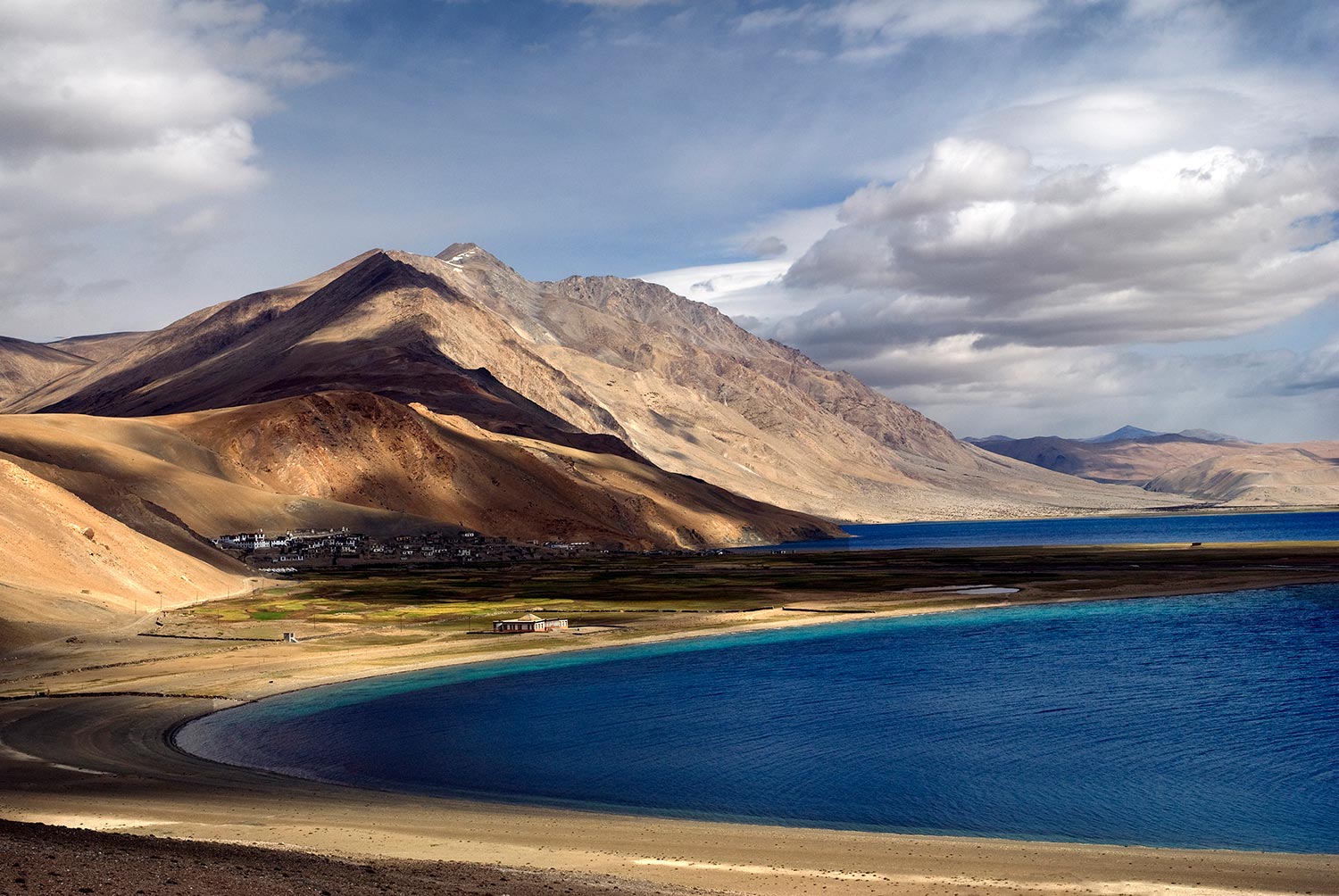
The hamlet, the summer home of the nomadic Changpas, has a couple of basic guest houses, but the lakeside tent resort accommodation is a warmer option. We were thankful for it because the mercury plummeted below the freezing point at night, and the insulated blankets and the hot water bags came in handy.
The next day, a half-day trek along the lake shores proved to be extremely rewarding with vantage views of the delicate curves of Tso Moriri and an opportunity to witness a horse race of the Changpa tribesmen—it was electrifying to watch a group of nomadic riders charging down the stark, barren landscape on their horsebacks under an unusually dark Ladakh sky.
After a couple of nights at Tso Moriri, we headed back to Leh and set off for Pangong Tso. The lake, a Ramsar site, lies on the China-India border and only one-third of its waters falls within Indian territory. We crossed the mighty Changla Pass, which at 17800 ft, is the fourth highest motorable pass in the world.
The landscape looked primordial with multihued cliffs—from light mossy green to magenta—towering overhead and small clusters of whitewashed, mud-and-stone houses hung precariously on the tumbling inclines. The gigantic, puckered rockfaces looked like bizarre sculptures carved out of Mother Earth by an eccentric sculptor.
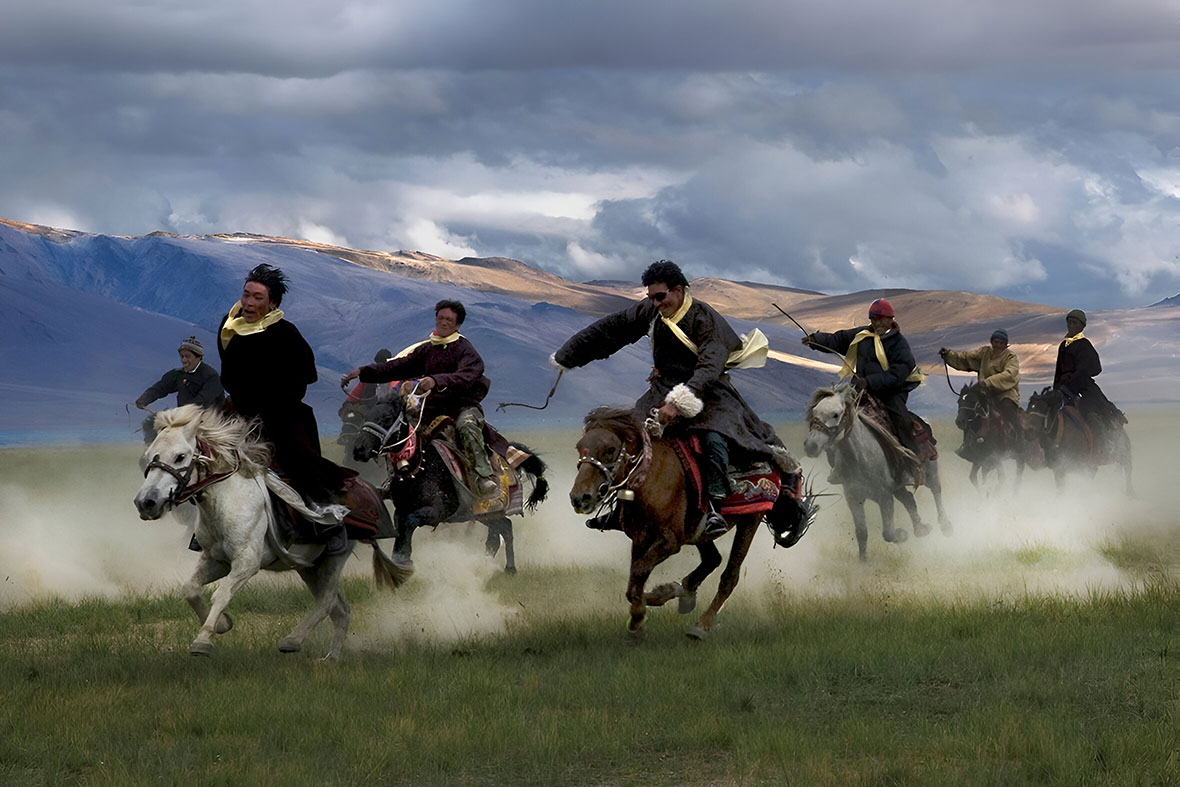
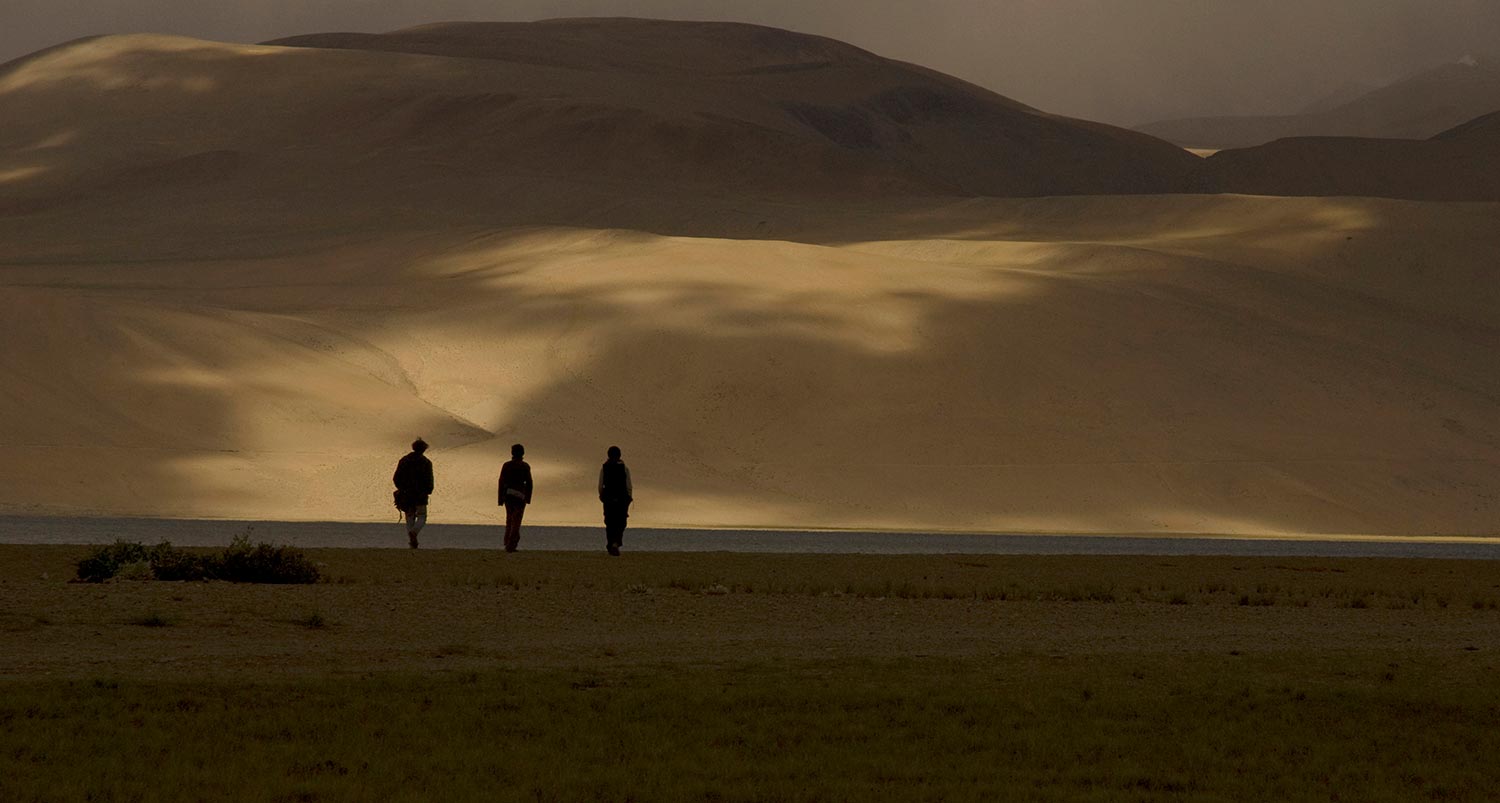
Pangong took our breath away. It loomed in the distance as a shimmering triangle. And the harshness of the valley metamorphosed into an ethereal plateau nestling the unearthly lake in its cradle. Pangong subtly shifted its blue shades as we drove nearer, and the serried peaks above its pristine waters completed the majestic spectacle.
In the afternoon, a short trek along the lakeshores took us to Spangmik village. It was here, six decades ago, that the Sino-Indian war had reached one of its fierce climaxes and a blockbuster Bollywood film had filmed its dramatic last scene.
A solitary rider slowly rode towards us, the Tibetan red of his horse saddle looking more saturated under an overcast sky. He was Namgay Yangzom, a Changpa herdsman, living and tending to the village flock of sheep for generations. He looked worried. A couple of his lambs were missing for a couple of days. A nomadic pastoralist, Namgay believes that a Changpa’s sheep are intrinsically sacred creatures bestowed upon him by the gods of the valley. Yangzom said he had heard about the armed conflict, but was unaward of the film that shot its climax on the lakeshore.
It was now time to head back to our lakeside tents. We stood still to watch the craggy cliffs emitting a soft, yellowish glow in the fading evening light. Darkness descended gently on the primal landscape, turning the aquamarine waters of Pangong Tso into a dark indigo.
